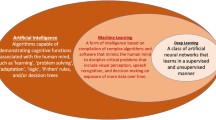Summary
¶ It is well known that intracranial pressure (ICP) is influenced by an array of predictable and unpredictable factors, which gives rise to a signal heavily loaded with stochastic, i.e. random components. Hence, statistical modelling of this signal has proved to be of limited utility, in spite of the very sophisticated mathematical methods applied. In recent years, neural network algorithms (ANN), which are an alternative to statistical methods, have proved their effectiveness in the prediction of trends, as applied in a variety of medical and non-medical tasks. We therefore attempted to test the efficiency of neural models in the on-line prediction of ICP values, compare their effectiveness to statistically oriented algorithms and combine ANN methods with some newer signal processing algorithms, like wavelet decomposition.
Prediction horizons of up to 5 minutes have been tested with various architectures of the neural predictor. For a 3 minute prediction horizon, a satisfactory accuracy of forecasting has been achieved with “plain” ANN, as expressed by the “average relative variance coefficient”. This was measured by the ratio of the prediction error obtained, in relation to the error which would occur if a current value were taken as the forecasted one. The prediction quality with statistical autoregressive models has proved unsatisfactory, whilst the result obtained using the ANN model with the wavelet transform incorporated, performed significantly better than the ANN models alone.
The prediction quality obtained with the ANN methodology seems to be satisfactory over a short time horizon, though no conclusion can be derived at this stage of the study, as to the clinical utility of this method. In particular, even with this methodology, it is not possible to forecast any sudden dehiscencies of the ICP signal with any practical reliability. From the point of view of modelling theory, such sharp deviations of the signal may be regarded as a “catastrophe”. This implies the necessity for a different approach to the ICP signal analysis with the artificial intelligence methodology; one, that is more oriented towards the global properties of the signal.
Similar content being viewed by others
Author information
Authors and Affiliations
Rights and permissions
About this article
Cite this article
Swiercz, M., Mariak, Z., Krejza, J. et al. Intracranial Pressure Processing with Artificial Neural Networks: Prediction of ICP Trends. Acta Neurochir (Wien) 142, 401–406 (2000). https://doi.org/10.1007/s007010050449
Issue Date:
DOI: https://doi.org/10.1007/s007010050449




